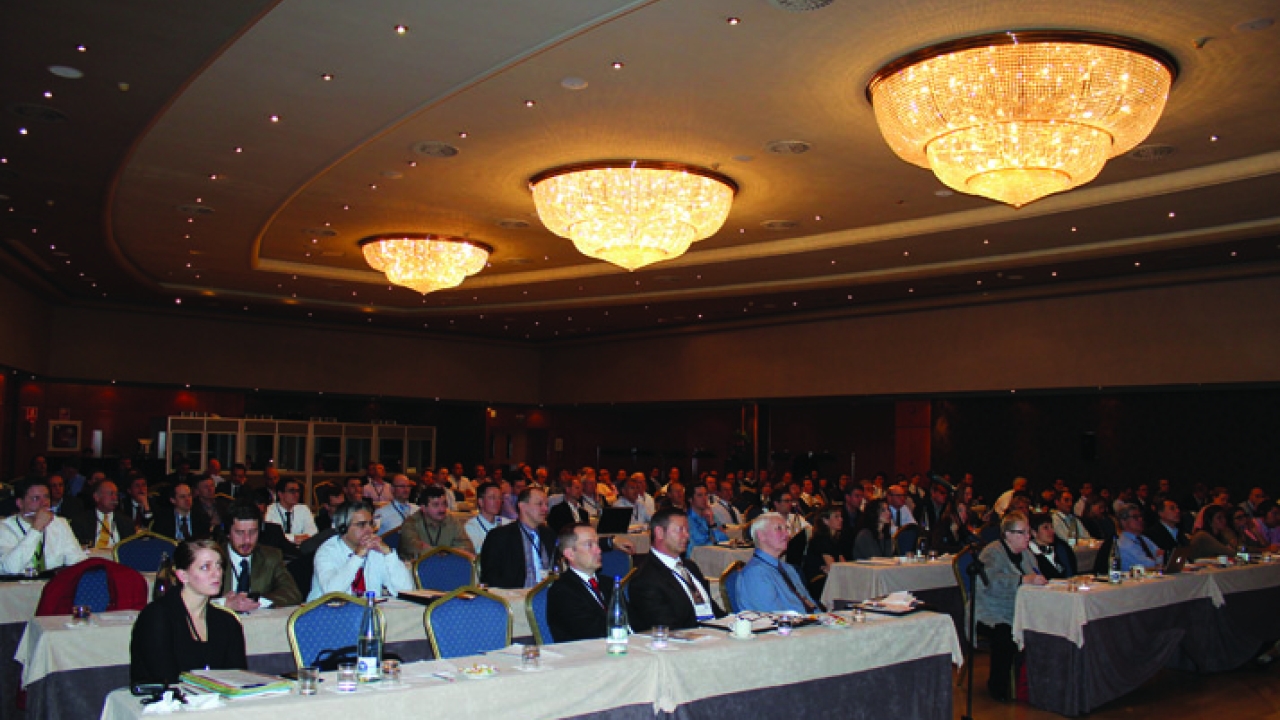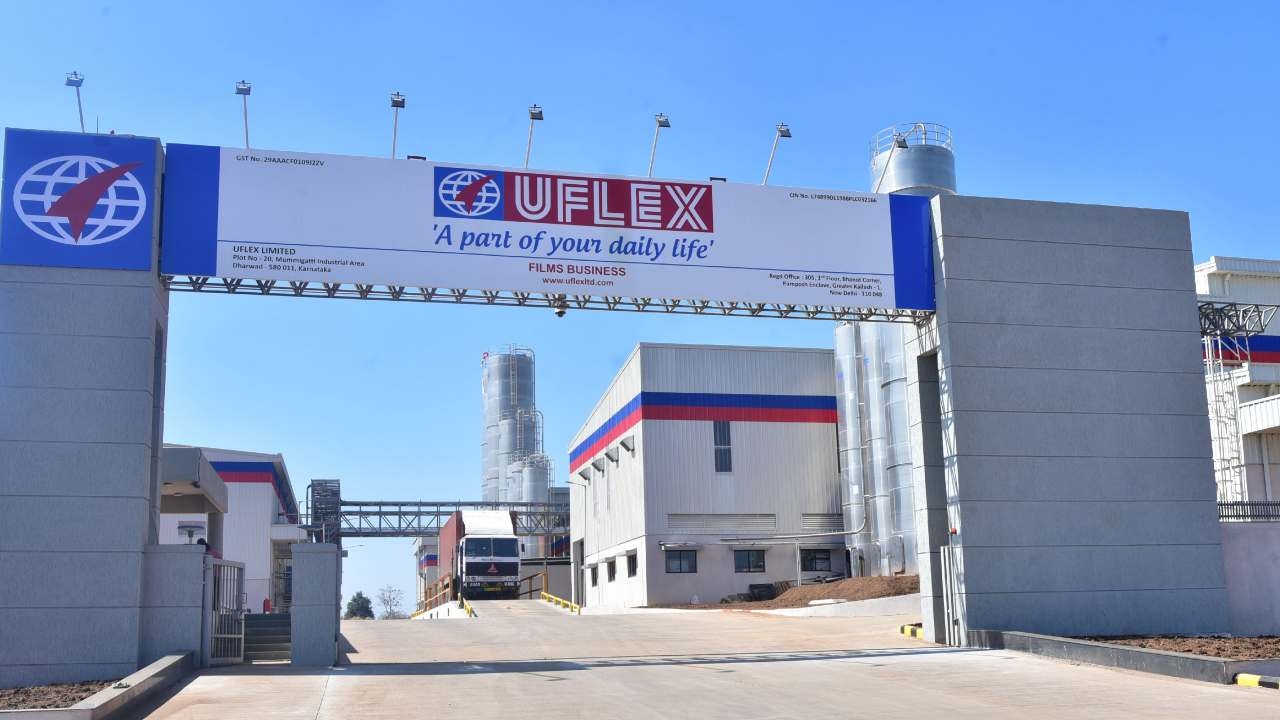Finat Technical Seminar looks to the future

Mike Fairley reports on a technical seminar which focused on the future of the pressure-sensitive industry
With a theme of ‘Self-adhesive labels and their future vs alternative technologies: Evolution or Extinction’ the recent Finat Technical Seminar in Barcelona attracted around 175 delegates. Presentations ranged from the history of self-adhesive labels to a review of threats and opportunities. A mix of technical, regulatory and market topics were covered, providing an interesting overall balance of subjects.
Held at the Hotel Fira Palace from the March 7-9, the program was aimed at providing a confident outlook to delegates who have been experiencing pressures from the environment and sustainability, from other labeling technologies – such as the growth in shrink sleeve labeling – and from material price increases and a slowing label market in developed economies.
An opening keynote presentation by Sjaak Elmendorp, Avery Dennison, set out an interesting historical overview of the evolution and development of self-adhesive labels, looking at the pioneering work of Stan Avery in the 1930s to milestones in adhesives, face and liner materials, linerless solutions, and the applications and markets for self-adhesive labels today.
In looking at the threats and opportunities for the self-adhesive industry, Corey Reardon of AWA, forecast global label industry growth of three and a half to four percent for the coming year, although the growth figures for the developed markets of Western Europe and North America were more likely to be half of those rates. The highest growth is expected in the fast-emerging markets of China, India, and Latin America.
While glue applied and self-adhesive labels are still by far the largest label sectors globally, shrink sleeve labels have now nevertheless gained a 12 percent market share. ‘Challenges for the pressure-sensitive industry’ explained Reardon, ‘include the costs of raw materials, competition for polymers , the perception of pressure-sensitive labels as high cost, and the whole area of environment and sustainability.’
Jeroen Van Bauwel of Xeikon presented a review of digital and flexo and how they complement each other, explaining that it was necessary to understand the puzzle and sell solutions rather than just print. The integration of variable print elements and the importance of workflow integration were also emphasized.
The challenges of converting thin films and liners were discussed in some detail by Maldwyn Nicholas Jones of Kocher + Beck. He explained that it was not easy to convert thin films but if the converter gets the parameter right then it can be done successfully, although it was likely to lead to some reduction in press speed. Areas to be addressed included keeping equipment in good condition, periodic inspection of cylinders, the accuracy of dies, die-height adjustment when running and consistency of film thickness. It was proposed that test runs should be made in advance.
Talking about performance labels, and particularly the durability of UV inkjet printed images and UL recognition, Trevor Hinchcliffe, 3M Industrial Adhesives & Tapes, examined performance label applications in terms of cradle-to-grave requirements, printing and converting needs, variable information application, and adhesive performance. Durability requirements, he explained, were resistant to dirt, grease, grime and chemicals. Currently largely printed offline, he felt that UV digital inkjet was ideally placed to meet future demands. He also reviewed UL Standards and what converters needed to do to obtain UL approval.
Looking at ‘the future for label printing’ with UV LED curing, David Johnson, Integration Technology Ltd, talked about the advantages of this technology, which offered instant on/off, reduced power consumption, safer wavelength and can be used with heat-sensitive substrates, requires no air extraction and uses no heavy metals.
Johnson told delegates that UV LED was currently a challenge for existing conventional technologies, but was finding increasing interest from the narrow-web digital label and packaging printing sector. Inks, he explained, were readily available and the systems were easy to integrate.
Day two opened with a presentation by Roger Hagedorn of the Consumer Goods Forum about the need to develop a common language on sustainability in the packaging supply chain using existing internationally recognized metrics. The optimum packaging solution was to be neither over-packed nor under-packed. Key sustainable pointers he explained were to favor biodiversity, use sustainably sourced materials, protect water sources, be renewable, avoid fossil fuels and make a low contribution to landfill.
This session was followed by Will Parker of Reflex Labels, probably one of the most environmentally-friendly and sustainable converters in Europe, who outlined all the areas where they had improved and/or made savings through sustainable materials, operations and applications. He concluded with a review of how they were using both linerless and traditional methods of labeling.
Other speakers included Wolfgang Aufmuth of Collano Adhesives who discussed sustainability considerations from the viewpoint of an adhesive manufacturer; Jonathon Sexton, Sun Chemicals, who examined some of the unintended consequences that arise when looking at ink technology and its environmental footprint, and Mark Macaré, Finat, who provided an update on the Finat release liner recycling program.
The final keynote presentation was by this writer, Mike Fairley, looking at some of the lessons we can learn from the evolution and history of the label industry, from the printing of the early wine, beer, pharma, food and personal care brands over the past 150-200+ years, the on-going demands of brand owners and how the industry has adapted and evolved, as well as how cost, price, downturn and other industry pressures actually stimulate innovation and take the industry forward.
The final part of this presentation set out two industry challenges: How to spread the message about the positive sustainable things that converters are doing worldwide that could benefit the whole industry and, secondly, how the industry needs to join together to provide information on the carbon footprint of the label supply chain that brand owners are starting to demand.
Labelstock suppliers are already working on a carbon footprint for their materials and ink makers are doing the same for inks. Pre-press companies are working on this, press manufacturers have started to do calculations, as well as some UV-curing systems suppliers. Even the MIS companies and the waste management end of the chain have started looking to calculate carbon footprints. Unfortunately, all this is largely being done in isolation from other suppliers in the chain, or without feeding data to the converter that could be used in his calculations. What is perhaps needed now is to set up a pilot project that joins all these elements together. The industry would undoubtedly learn a lot that would take them into a more sustainable future.
All-in-all the Finat Technical Seminar provided an interesting mix of presentations, stimulated thought amongst delegates, and left everyone looking forward to the Finat Congress in June.
Pictured: Great attendance at Finat Technical Seminar 2012 Barcelona
This article was published in L&L issue 2, 2012
Stay up to date
Subscribe to the free Label News newsletter and receive the latest content every week. We'll never share your email address.


